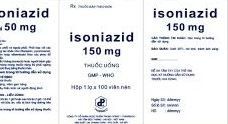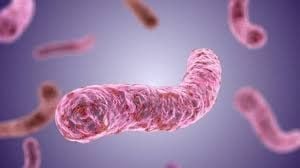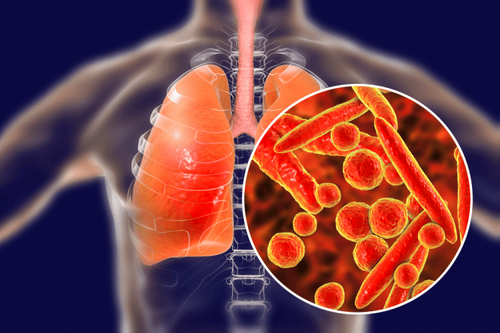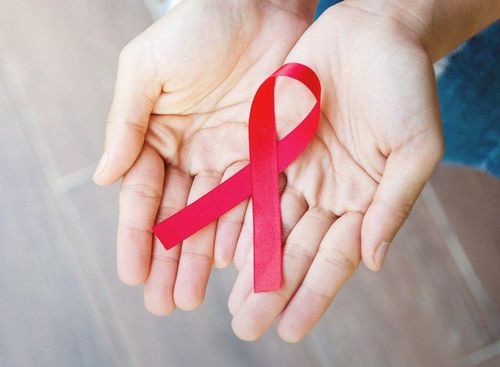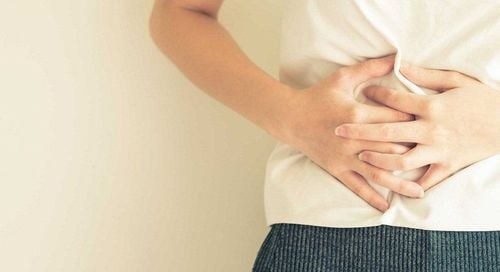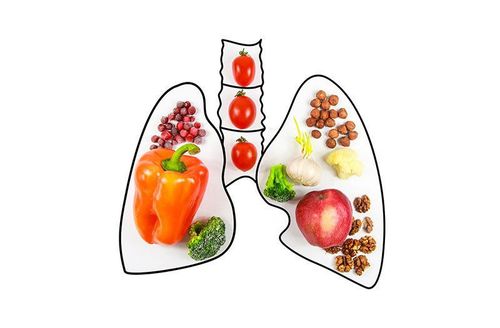This is an automatically translated article.
The article was professionally consulted with Master, Doctor Tran Thi Vuong - Doctor of Microbiology - Laboratory of Laboratory - Vinmec Hai Phong International General Hospital.Tuberculosis is caused by the bacteria Mycobacterium tuberculosis which is an infectious disease that causes many dangerous symptoms. In addition to the diagnosis of tuberculosis based on typical symptoms of the disease, testing for TB bacteria plays a decisive role.
1. Where is the test for TB bacteria?
Testing for TB bacteria can use samples from the patient's sputum, bronchial aspirate, or gastric juice to do microbiological tests for bacteria. Sputum collection technique greatly affects the accuracy of TB test, the way to collect sputum specimens is as follows:On the day before sputum collection, the patient should drink a lot of water and can take an expectorant if needed. In the morning, when you wake up to test for TB bacteria, the patient must not use antiseptics, mouthwash or oral hygiene solutions, and do not eat or drink (can drink filtered water). Take 2 deep breaths: The first time about 5 seconds and exhale slowly, the second time take a deep breath and cough vigorously until there is phlegm in your mouth, when coughing always cover your mouth with a tissue. Try to collect sputum, avoid only taking saliva alone, if the patient is diagnosed with pulmonary tuberculosis, peritoneal tuberculosis, lymph node tuberculosis ... can not expect sputum, can give oral expectorant or nebulized saline. Hypertonicity and vibration for easier spitting.
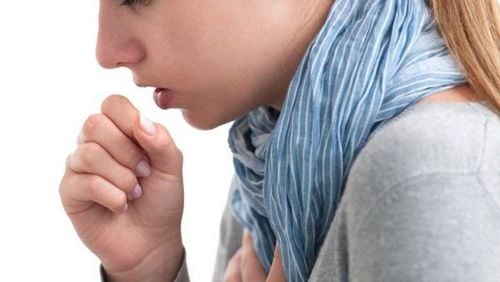
2. Tests for TB bacteria
Some of the tests for TB bacteria that need to be done include:Direct smear technique
This is a microbiological technique that only detects acid-fast bacteria (AFB) but not entirely TB bacteria.
Advantages: This technique is easy to perform, gives quick results and low cost and can be done anywhere. Cons: The sensitivity of this method is quite low, reaching only 30-40% when scanning only one specimen and 65-75% when comparing many samples. The result is only positive when the number of TB bacteria in the specimen reaches more than 10000 bacteria/ml. Therefore, to increase the number of bacteria in the specimen, the sputum homogenization method can be used, which is to dilute the sputum with NaOH, then centrifuge to remove the residue, and stain with Niehl-Neelsen.
Error results in this method can be due to AFB-like dyes that cause errors or bacteriological contamination from TB testing equipment, specimen collection and storage methods are not it's correct.
Culture method
This is a technique that helps to definitely identify TB bacteria with the following characteristics:
Advantages: Isolation and identification of TB bacteria as well as making antibiotics with drugs to treat tuberculosis . Cons: Time to get results is quite long and expensive, requiring more modern equipment to perform. Cultures are also carried out on different media depending on the purpose of the test. Cultures in solid media are nutrient rich media such as Ogawa, Dubos, most commonly Lowenstein Jensen. The time for TB bacteria to grow is about 3-6 weeks and negative results when after 2 months there is no sign of bacterial growth.
Culture in liquid medium
These are the mediums that have been used in recent times because of faster results (about 2 weeks) but require more expensive and modern equipment. The media can be BACTEC TB 460 or MGIT system
Molecular biology technique
The most modern technique available in the diagnosis of TB, including the following techniques:
Polymerase chain reaction (PCR) : PCR test has the advantage of very high sensitivity and specificity, quick results in only 2 days and rapid diagnosis of drug-resistant tuberculosis, performed on diverse specimens such as sputum, bronchial fluid. , pleural fluid, cerebrospinal fluid. However, the cost of this test is quite expensive, requires complicated equipment, and cannot distinguish live or dead TB bacteria, so it is easy to have false positives, it is necessary to compare with both X-ray and clinical. to identify the disease. Xpert-MTB test: Has high sensitivity and specificity as well as rapid results, and also rapidly identifies rifampicin resistance and does not cross-react with other mycobacteria.
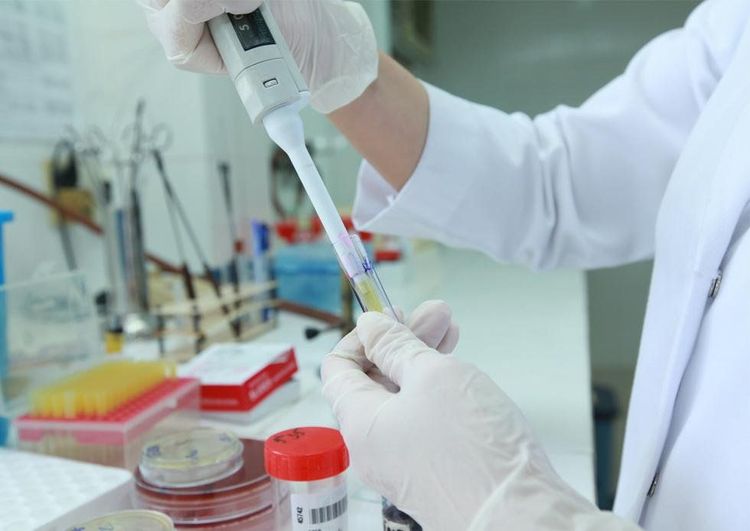
3. Immunoassays
While microbiological tests are the gold standard for diagnosing TB by detecting the presence of TB bacteria, the following immunoassays help in early identification of TB infection in latent TB patients.3.1 Mantoux Response
Meaningful assessment of TB infection status and orientation for TB diagnosis.
Principle: This test uses tuberculin for injection in the home to check the susceptibility of lymphocytes to TB bacilli. 48-72 hours after injection, the sensitized lymphocytes will be activated, creating a hypersensitive reaction. Results will be based on the diameter of the reaction halo at the injection site, positive in the following cases:
Greater than 5mm in HIV-infected people, new contacts with TB patients, and ex-pulmonary TB patients who take long-term corticosteroids. Greater than 10mm in new immigrants from high prevalence areas, diabetes, chronic renal failure, gastrectomy. Greater than 15mm in a person without high risk factors. 3.2 QuantiFERON-TB (QFT) test
Has value in determining active TB, differential diagnosis between TB infection and BCG vaccination as well as predicting reactivation of tuberculosis in latent individuals, helping to Treatment monitoring
The principle is a quantitative test of interferon-g secreted in lymphocytes after overnight incubation with PPD The advantage of the test is that it gives quick results during the day, the patient only needs 1 time and can High sensitivity and specificity Vinmec International General Hospital currently provides BCG vaccination service to prevent tuberculosis from the company Vaccines and Medical Biologicals, manufactured in Vietnam.
The advantages of vaccination at Vinmec International General Hospital include:
Vaccines are imported and stored in a modern cold storage system, with a cold chain meeting standards. GSP standards, keeping vaccines in the best condition to ensure quality. Customers will be examined by specialist doctors, fully screened for physical and health problems, advised on preventive vaccines and injection regimens, how to monitor and take care of them after vaccination. Indications for vaccination according to the latest recommendations of the Ministry of Health & World Health Organization to ensure the best effectiveness and safety for children. Undertake medical supervision before, during and after vaccination at Vinmec Health System and always have an emergency team ready to coordinate with the vaccination department to handle cases of anaphylaxis, respiratory failure - circulatory arrest, ensuring Ensure timely and correct handling when incidents occur. The vaccination room is airy, with a play area, helping customers feel comfortable as if they are walking and have a good mentality before and after vaccination. A team of experienced and professional pediatric doctors and nurses, understand children's psychology and apply effective pain relief methods for children during the vaccination process. 100% of vaccinated customers are monitored 30 minutes after injection and reassessed before leaving. For customers who are children, parents will receive a reminder message before the injection date and the child's vaccination information will be synchronized with the national immunization information system.
Please dial HOTLINE for more information or register for an appointment HERE. Download MyVinmec app to make appointments faster and to manage your bookings easily.





